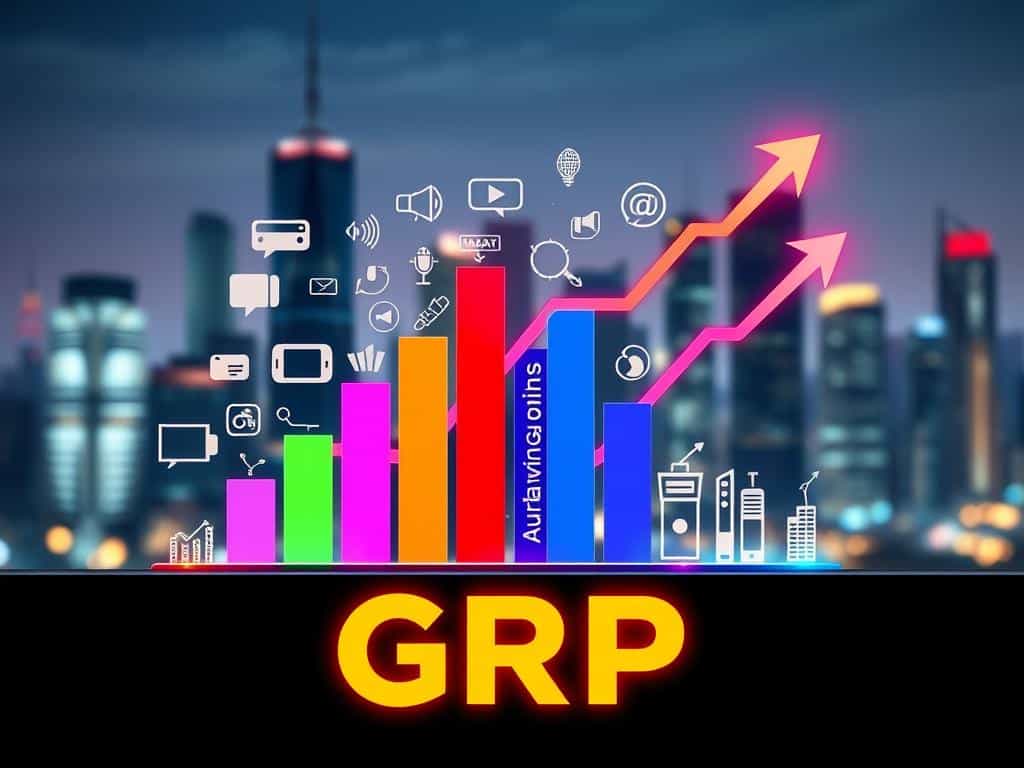When evaluating advertising limitations, one prominent issue is the high cost associated with this promotional tool. Advertising often demands substantial financial investment, making it a challenging option for many companies, particularly small businesses. Unlike other marketing strategies, its one-way communication nature eliminates the interactive element that could better engage audiences.
The expense is not the only shortfall; the broad reach can lead to overgeneralization, missing niche markets. Research highlights that as many as 120 million people in the United States feel unrepresented in ads. Moreover, 66% of African Americans, 53% of Latino/Hispanic Americans, and 51% of Asian Americans express dissatisfaction regarding their portrayal in advertising. This discrepancy underscores significant advertising challenges in properly targeting and representing diverse groups.
Overall, these drawbacks reveal that while advertising remains a potent promotional tool, its limitations can undermine effectiveness and inclusivity. Brands and marketers must consider these factors to optimize their strategies and foster better audience engagement.
High Costs Associated with Advertising
Advertising is a potent tool for driving sales, yet it carries significant financial burdens. The expansive nature of advertising requires careful allocation of an advertising budget, conformed within financial constraints, as companies juggle advertising expenses.
Expensive Media Buys
Securing premium spots on television, radio, or even online platforms often involves a substantial media buy cost. With advertising elasticity illustrating how a 1% increase in advertising can spur sales, the initial expenses must align closely with projected returns. However, businesses need to remain wary as high advertising expenses might not always guarantee an increase in demand, particularly for products with high price elasticity of demand (PED).
Production Costs
Beyond media buy cost, the production phase significantly inflates the advertising budget. Crafting compelling ads, from scripting to filming, incurs additional financial constraints. Items like luxury goods, which exhibit a positive income elasticity of demand, depend heavily on high-quality, visually appealing advertisements to entice customers. Hence, the production expense forms a vital slice of the total advertising expenditure.
Opportunity Costs for Small Businesses
Small businesses face unique challenges as they juggle financial constraints while striving to enhance their market presence. The opportunity cost of allocating funds to advertising expenses means that money cannot be used for other essential areas like product development or improving customer service. For budding enterprises, these trade-offs can determine their long-term viability and competitive edge in the market.
Understanding and managing these costs is crucial. Effective allocation of the advertising budget can address financial constraints while promoting growth. Balancing these aspects ensures sustainability and optimal returns on advertising investments.
Limited Targeting and Reach
One of the prominent drawbacks of advertising lies in its limitations regarding market targeting and overall advertising reach. While mass marketing aims to maximize exposure, this approach often encounters difficulties when tailored to specific consumer needs. Despite differentiated marketing strategies that enhance presence across targeted segments, the challenge remains in penetrating defined niche markets effectively.

Difficulty Reaching Niche Markets
Targeting niche markets presents unique challenges, particularly for companies with limited resources. Though niche marketing is designed to focus on very specific consumer segments, it often grapples with financial vulnerabilities and fluctuations in demand. This narrowly defined targeting can lead to higher penetration within the segment but may limit the overall advertising reach, making the marketing effort less effective.
Case studies such as Moshi Monsters’ targeting of parents or Firefox’s demographic-focused approaches exemplify how niche market strategies can be quite effective. However, limitations exist, especially if the niche audience does not generate the expected volume or consistency in sales, thus posing significant niche market challenges.
Overgeneralization Issues
Overgeneralization is another significant issue in market targeting. Companies aiming for broad market appeal may unintentionally dilute their messaging, leading to ineffective targeting. When advertising campaigns lack specificity, they risk alienating potential customers who do not see the product or service as tailored to their needs.
This issue is compounded in mass marketing campaigns, where the breadth of the audience can overshadow niche preferences and behaviors. For example, while lifestyle magazines like FourFourTwo successfully target football enthusiasts by focusing on shared interests, broader campaigns may struggle without similar focused segmentation. By failing to address the desires and characteristics of specific groups, advertising efforts can fall short in truly engaging and converting their audience.
Credibility Concerns
Advertising credibility has been under intense scrutiny, particularly as audience skepticism continues to grow. The inundation of advertisements has led to increased consumer skepticism, affecting the perceived honesty of promotional messages and eroding advertising trust.
Audience Skepticism
Audience skepticism is a major hurdle in modern advertising. Due to misleading claims and questionable tactics, such as those employed by 5-hour Energy which resulted in $4.3 million in penalties for false advertising, consumers are becoming increasingly wary. This skepticism extends to questioning the motives behind advertising campaigns, ultimately reducing ad credibility.
Moreover, the rise of ethical concerns, like those highlighted in Forrester’s report where 73% of U.S. customers prefer companies supporting social justice, further complicates trust in advertising. Negative advertising practices, including discrediting competitors, can lead to legal troubles and further diminish consumer trust.
Overexposure and Ad Fatigue
Another critical issue is message fatigue caused by the sheer volume of advertisements consumers encounter. The proliferation of digital media outlets and constant bombardment of ads across platforms contribute to this overexposure. This ad fatigue results in consumers tuning out messages altogether, making it challenging for brands to maintain advertising trust and engagement.
Transparency is a key factor in mitigating these problems. Ethical marketing practices, such as clear labeling of sponsored content and responsible social media engagement, are crucial steps in rebuilding ad credibility. In a fragmented media landscape where print subscriptions and television viewership are declining, brands must navigate these issues to regain and retain consumer trust.
Non-Interactive Nature of Advertising
The traditional approach to advertising communication often focuses on a one-way messaging system, which can limit customer engagement significantly. In today’s digital age, consumers demand more from their interactions with brands. They seek genuine dialogue and active participation rather than mere passive reception. This one-way messaging leaves little room for the dynamic exchanges that foster customer engagement and loyalty, making the non-interactive nature of advertising a notable shortcoming.
Unlike interactive marketing strategies, traditional advertising communication methods do not facilitate a two-way conversation between brands and their audiences. By sticking to one-directional messages, advertisers miss valuable opportunities for feedback and relationship-building. This limitation is particularly evident when considering historical data showing advertising spending, which emphasizes conventional methods heavily: worldwide spending on advertising in 2015 hit approximately $529.43 billion, with significant expenditures still dedicated to formats like TV (40.4% of the projected distribution in 2017).
Furthermore, advertising has evolved substantially since the early days of simple print ads. For instance, the French newspaper La Presse integrated paid ads into its pages as far back as June 1836, setting the stage for the modern advertising industry. Yet, the non-interactive elements have largely persisted. The world’s first full-service advertising agency, N.W. Ayer & Son, founded in Philadelphia in 1869, marked a significant advancement in advertising practices. However, these innovations often continued within the bounds of one-way messaging.

Considering current trends, there’s a clear push towards more interactive marketing solutions. For instance, digital platforms now account for a third of total advertising spending. As compared to one-way messaging, interactive marketing offers compelling avenues for forming deeper connections with consumers. Despite the advancements in technology and media, traditional advertising methods often remain stuck in the past, focusing excessively on broadcast rather than interaction.
In conclusion, the transition from one-way messaging to interactive marketing is essential for fostering customer engagement. The advertising landscape is shifting, and brands must adapt to maintain relevance in an increasingly interactive world.
The Inability to Customize Messages
The limited ability of traditional advertising to tailor content to individual consumer preferences is a significant drawback. Unlike personalized marketing, which leverages data to deliver customized messaging, traditional ads often miss the mark in resonating with diverse audiences. This inability to customize not only affects engagement but also leads to missed opportunities in capturing potential customers’ attention.
Lack of Personalized Advertising
Today’s consumers expect more from brands – they seek personalized interactions that make them feel valued. Seventy-one percent of consumers anticipate personalized experiences, and seventy-six percent express frustration when their expectations aren’t met. This disconnect reveals a profound deficiency in traditional advertising methods that fail to adapt to the surge in consumer demand for tailored advertising.
Companies that prioritize personalized marketing see tangible results. Those that excel at creating customized messaging generate 40 percent more revenue than their slower counterparts. Moreover, top-performers in personalization across industries could unlock over $1 trillion in value. These figures illustrate the financial imperative of adopting tailored advertising strategies.
Further, the pandemic highlighted the critical nature of personalized marketing. Three-quarters of consumers switched to new buying methods, with roughly 75 percent trying a new shopping behavior. Over 80 percent of these consumers intend to continue these new behaviors. This shift emphasizes the need for businesses to foster stronger consumer relationships through customized messaging.
| Statistic | Percentage/Value |
|---|---|
| Expect Personalized Interactions | 71% |
| Frustration When No Personalization | 76% |
| Revenue Increase from Personalization | 40% |
| Value from Top Personalization Performance | $1 Trillion |
| Consumers Trying New Shopping Behaviors | 75% |
| Intending to Continue New Behaviors | 80% |
Ultimately, integrating personalized experiences into advertising efforts is not merely advantageous; it’s essential for enduring success. The strong correlation between tailored advertising and consumer satisfaction highlights the importance of transitioning away from impersonal, generalized approaches to ensure competitive advantage and revenue growth.
Impersonal and General Approach
In today’s competitive market, impersonal advertising tends to fall flat. An impersonal advertising strategy often relies on broad messaging that may not resonate deeply with your audience. This general marketing strategy bypasses the nuances of audience desires and interests, leading to a possible decline in engagement and, ultimately, lower ROI.
The shift to digital marketing strategies highlights the necessity for tailored, personalized content. Traditional methods like newspaper ads, despite their broad reach—for instance, the Chicago Tribune boasts a circulation of almost 900,000 on Sundays—struggle to match the effectiveness of more specialized approaches. Direct mail marketing, with a response rate of 9%, far surpasses email’s 1% response. The success of targeted campaigns proves that understanding your audience’s needs can dramatically enhance outcomes.
A significant portion of the $245 billion spent annually on advertising in the United States goes to campaigns that aim to create a lasting impact. However, an overreliance on broad messaging can dilute the effectiveness of your marketing spend. For example, Altoids saw a substantial increase in consumption and brand awareness within a year after shifting from an impersonal general marketing strategy to a more focused campaign. This highlights the urgency of adopting strategies that can forge deeper connections with your audience.
Digital marketing remains the most cost-effective method today, offering impressive ROI metrics. Email marketing alone delivers an average of $42 for every $1 spent. In comparison, a general marketing strategy that doesn’t address specific audience needs can lead to wasted expenditure and missed opportunities for engagement.
- Direct Mail Response Rate: 9%
- Email Marketing Response Rate: 1%
- ROI for Email Marketing: $42 per $1 spent
- Annual Advertising Spend in the US: $245 billion
Choosing a marketing strategy that places an emphasis on understanding and addressing audience interests will yield better results. Notably, a well-structured digital campaign, grounded in specifics rather than generalities, can drive significant website traffic and long-term growth. It’s crucial to navigate the continually evolving landscape with a strategy that aligns with contemporary audience expectations and behaviors.
How Does Competitive Advertising Address the Shortcomings of Traditional Advertising?
Competitive advertising often highlights the unique benefits of a product while directly contrasting it with competitors, addressing the limitations of traditional advertising’s broader approach. However, false claims in competitive advertising can mislead consumers, undermining trust and credibility. Effective campaigns rely on transparency and accuracy to distinguish their products while fostering brand loyalty.
Conclusion
While advertising remains a cornerstone of strategic marketing, it is crucial to recognize its inherent shortcomings. High costs, limited targeting, and credibility concerns are some of the key issues that challenge the advertising efficacy. Newspapers and magazines, despite their extensive reach of about a billion people per day, have seen a decrease in market share due to the rise of television and internet platforms. This highlights the need for marketing improvement, emphasizing the importance of a diversified approach that goes beyond traditional advertising methods.
Recognizing these limitations, businesses can explore advertising alternatives to enhance their overall marketing strategies. Digital engagement tactics like social media interaction, personalized marketing efforts, and leveraging customer feedback for more tailored campaigns are effective methods to improve reach and engagement. For instance, short video platforms such as Douyin have demonstrated significant efficacy in influencing users’ purchase intentions, especially with health-related products. The shift towards digital platforms underscores the necessity of adapting to new technologies and consumer behavior for a more interactive and personalized marketing plan.
Ultimately, understanding the dynamic and complex nature of advertising enables businesses to better navigate their marketing efforts. By acknowledging the constraints and exploring innovative methods like targeted digital campaigns and personalization, companies can significantly improve their marketing outcomes. In a world where the average American is exposed to 3,000 marketing messages daily, honing in on effective, relevant, and persuasive advertising strategies is essential for capturing consumer attention and driving engagement.








